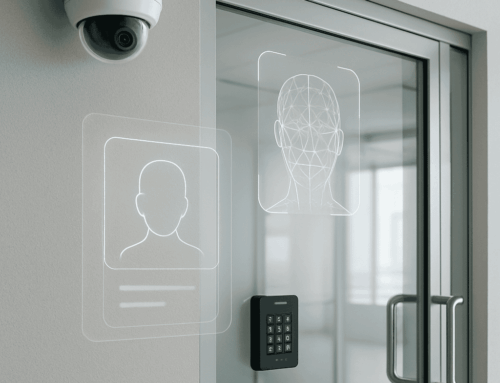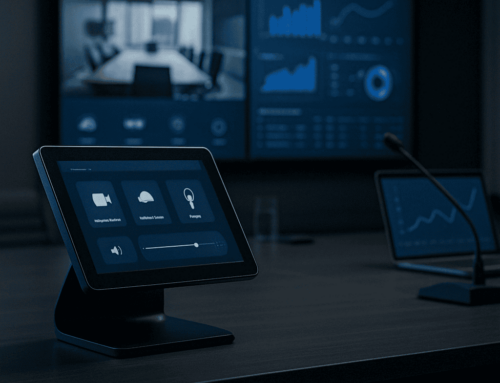Desktop As A Service (DaaS): A Complete Beginners Guide

How many devices are in the modern workplace? How does this compare to 10 years ago? If you’re like most businesses, you find yourself purchasing hardware at an increasing rate. Of course, devices are expensive and can be unreliable. As a result, desktop virtualization solutions like desktop as a service (DaaS) are gaining momentum.
If you want your organization to create its virtual workspace in a cloud environment, read on to find out about DaaS and its feasibility.
What is Desktop as a Service (DaaS)?
Desktop as a Service (DaaS) is a cloud service that allows you to connect to virtual desktops remotely through a web browser. This gives employees the user experience and benefits of a desktop on any user’s device.
In the DaaS model, third-party cloud providers manage and maintain the infrastructure of the virtual desktops at the backend, so the organization has to make no other investment. You purchase this service under a subscription model.
How is DaaS different from VDI?
The Virtual Desktop Infrastructure (VDI) is a technique where an operating system runs on a central server, and the resulting virtual desktop image is sent through a network to devices. It essentially centralizes multiple remote desktops onto one server, where virtual machines deliver the images to endpoint devices. Users can then interact with the OS without needing specific hardware.
This system works in two alignments. In the 1:1 alignment, one virtual desktop is accessed by one user, so as many images exist as the number of users. In contrast, the 1:many alignment, offered by Microsoft and hosted only through Microsoft Azure, lets you share several virtual desktops under one operating system.
VDI is managed and maintained in the company’s own data center, whereas DaaS is hosted on the cloud and handled by a third-party service provider. This leads to certain differences:
- You need to install, maintain, and manage any required infrastructure yourself to deploy VDI. If you’re using a private cloud, your host provider needs to do so. However, in DaaS deployments, the service provider is responsible for such tasks.
- VDI is deployed based on a single-tenant model, where all the data center resources are dedicated to one organization. On the other hand, third-party data centers dedicate their resources to multiple other organizations alongside yours under the multi-tenant model.
- The up-front costs of VDI deployment are high, whereas DaaS is based on a pay-as-you-go subscription model.
- You can use VDI offline, whereas DaaS requires an internet connection.
Benefits of Desktop As A Service
The growing popularity of DaaS solutions is rooted in a number of benefits that make them more convenient than VDI to deploy:
Affordability and Predictability
As DaaS doesn’t require you to build your own infrastructure, it has no hefty upfront costs that usually prevent smaller organizations from being able to invest in virtual apps and desktops. Using DaaS reduces traditional management costs by 30 – 50% over a four-year period. The subscription-based model makes DaaS deployments economical and predictable.
Scalability
As DaaS eliminates the need to install or expand company infrastructure, your cloud is independent of the space on your server. You can scale it up or down easily and in a cost-effective way by upgrading the subscription with the DaaS vendor.
Ease of Deployment and Management
The DaaS service provider handles everything on the backend. This includes necessary updates, repair, and management. So, the need for IT personnel is reduced, alleviating the burden on the existing IT team and reducing labor costs.
Better Data Security
Virtual systems alleviate the need to monitor every single device for security threats. Security is ensured using a central infrastructure that is designed to protect data. Data is automatically encrypted and backed up. Disaster recovery capabilities of organizations improve this way as well.
It’s Greener
The less material a company uses, the lesser its carbon footprint. Energy usage decreases as a result as well. Opting for a DaaS solution will let you contribute your part toward a responsible future.
What are some of the business use cases for DaaS?
The following common use cases put DaaS at an advantage in the market:
Enabling Bring Your Own Device (BYOD)
Many workers prefer using their own devices to work (BYOD). However, security vulnerabilities on these devices can compromise the company’s data. Also, the company may be testing a program or a Linux distro, and many employees could have Windows installed, creating a speed bottleneck. DaaS solves this problem by allowing the company’s digital environment to be available on every device.
Workforce Flexibility
The Covid pandemic was catastrophic to organizations that could not enable remote work swiftly. Additionally, being confined to a physical space restricts mobility, reducing the workers’ ability to do work when they are away on, say, client meetings or business tours. DaaS solutions allow extreme flexibility in how it delivers virtual desktops on any device.
Business Continuity
Natural disasters or accidents can disrupt a company’s infrastructure, and not having data backups can prove to be detrimental to business continuity. Enlisting the services of DaaS providers improves the chances of data recovery as they usually have several backups across multiple data centers to ensure client data remains safe.
No Repeated Installations
Conventionally, all office PCs would come with a similar set of applications that would have been isolated from each other. Not only does this add to costs and time, but it also makes keeping the applications up-to-date a challenge. Using DaaS cuts these costs, time, and efforts by hosting the app on the cloud and virtualizing it for users.
Facilitating Partnerships
Traditionally, contracting would require a company to give its devices to contractors. This practice is inconvenient because it can require the contractor to work inside their client’s office premises. Chances of breaches and security risks are exacerbated this way.
As DaaS lets contractors work on a company’s projects, it facilitates partnerships while reducing the possibility of breaches.
About i.e.Smart Systems
i.e.Smart Systems is a Houston, TX based technology integration partner that specializes in design and installation of audio/visual technology and structured cabling. For more than three decades, our team of in-house experts has partnered with business owners, architectural firms, general contractors, construction managers, real estate developers, and designers in the Houston market, to deliver reliable, scalable solutions that align with their unique goals.




